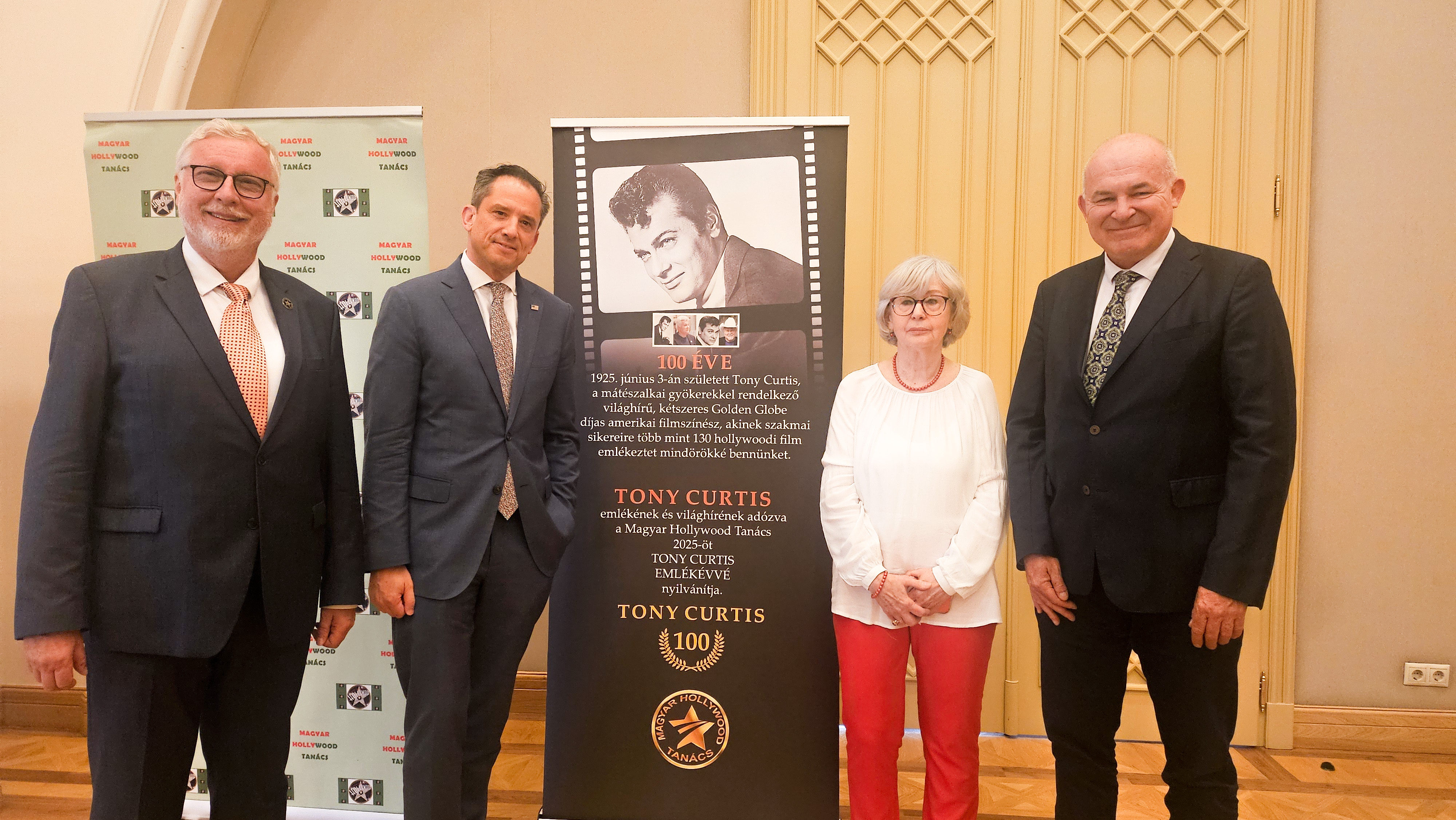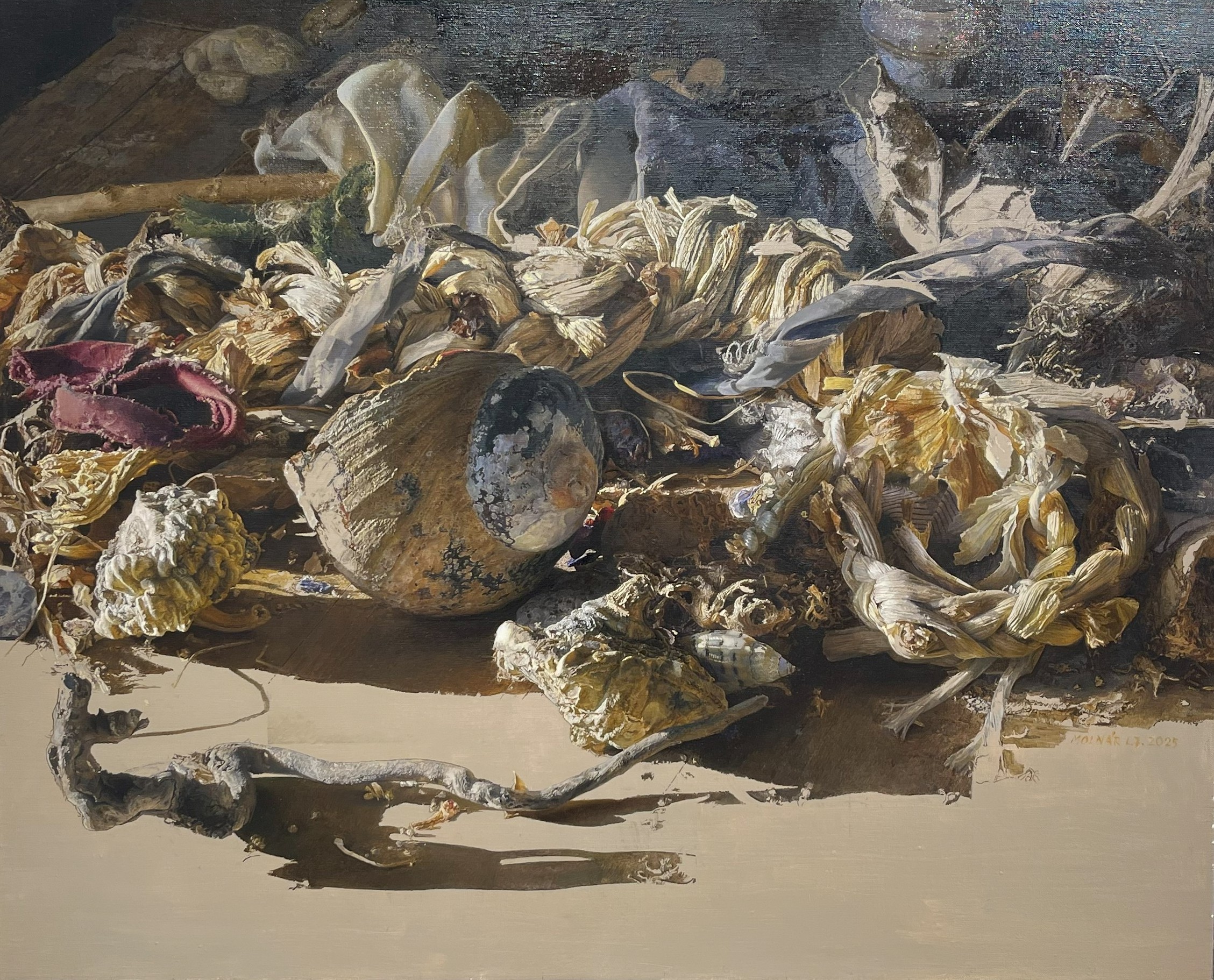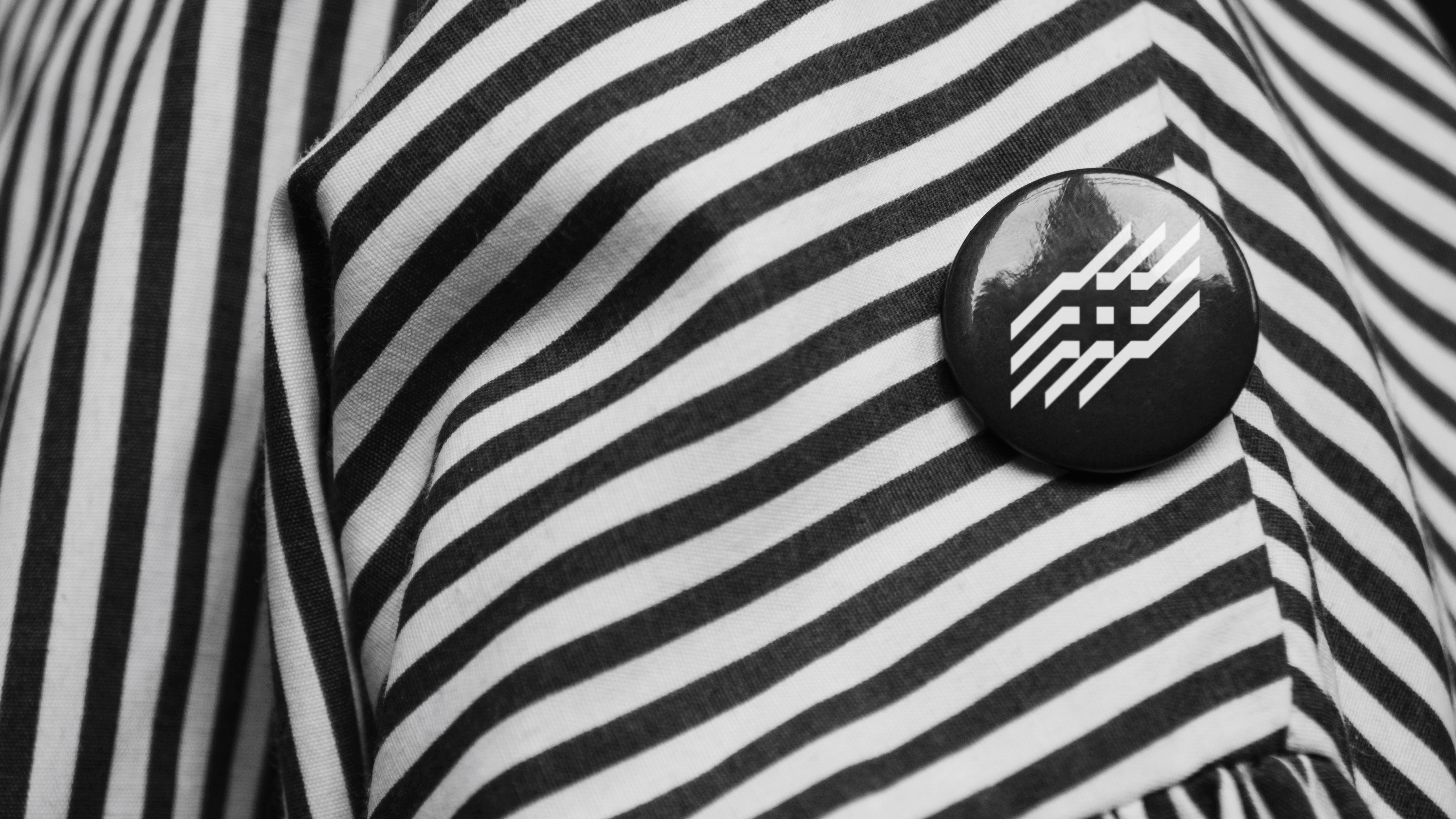
With support by the Hungarian Academy of Arts and in the scope of the event series "Design Week", the Hungarian Design Cultural Foundation and the Hungarian Design Council are organising a design conference entitled "Future Now" to be held on 28th September 2018.
In January 2018, as part of the preparation for the conference event, the Hungarian Design Cultural Foundation advertised a call for applications for brand identity design grants with respect to the design of the conference's logo and brand identity. Klaudia Juhász and Júlia Pothárn, creators of the entrant awarded with the first prize, are recalling their success story.
Please, tell us about your artistic careers: where do you study and why did you decide to study design?
Klaudia Juhász (KJ): We both study at the Hungarian University of Fine Arts, and we have just finished our first year majoring in graphic design. Back in the secondary school I did not know where to continue my studies. All I knew was that I wanted to study something in connection with art. I attended the Hungarian University of Fine Arts' entrance examination preparation course and there I was captivated by graphic design because I got to like the essence of graphic design: to exert an effect and to have an impact on people; and on top of all this, one needs to have creativity to achieve this!
Júlia Pothárn (JP): I learnt graphic design at the Specialised Secondary Art School of Szombathely (Hungary) and when I finished my studies there, I was admitted to the Budapest-based Hungarian University of Fine Arts. Visual culture has been important for me since my childhood: if we look around ourselves, we see that everything around us – ranging from posters through motion pictures and illustrations to signs – has been created by graphic designers.
How did you learn about the call for applications posted by the Hungarian Design Cultural Foundation?
KJ: The professors at the Graphics Department always check calls for applications and update us about those opportunities that are professionally relevant for us, students. It was through our University's academic staff that we learnt about the call.
JP: I don't think either of us would have submitted an application all by herself: by the time we realised we wanted to apply, there was merely two weeks to go until the deadline for the submission of applications. After a seminar at the University, I asked Klaudia if she wanted to apply and then we decided to submit an application jointly. It was also possible to apply alone, or in groups of two or even three, and by that time we actually already knew that some of our mates had already applied, and this also motivated us to submit our own application. This seemed a great opportunity as it actually rarely happens that there are applications for calls in the field of design.
What does your work communicate? What helped you to create these designs?
JP: In the scope of the call for applications and as an accompaniment to the slogan "Future Now", such logo designs were expected that can be separately interpreted as far as their emblem is concerned. In other words, these emblems were to consist of a sign and a logotype. In addition, apart from the logo designs, applications were to include designs for monochrome and colour brand identity elements. The designs were supposed to represent the following: the future of design, trends in modern times, tendencies in design as far as references to the future are concerned, and the appearance of new technologies. To join all this, we designed an emblem that visually includes and dimension-wise represents the time horizons of the past, the present and the future.
KJ: The emblem we created visualises the temporal and spatial nature of the development of technology and technological solutions, and concurrently also alludes to the technological systems influencing the future opportunities available to designwork. The symbol we devised is in fact an "illusory/endless" figure, which is based on a spatial illusion and signals the endlessness of time.
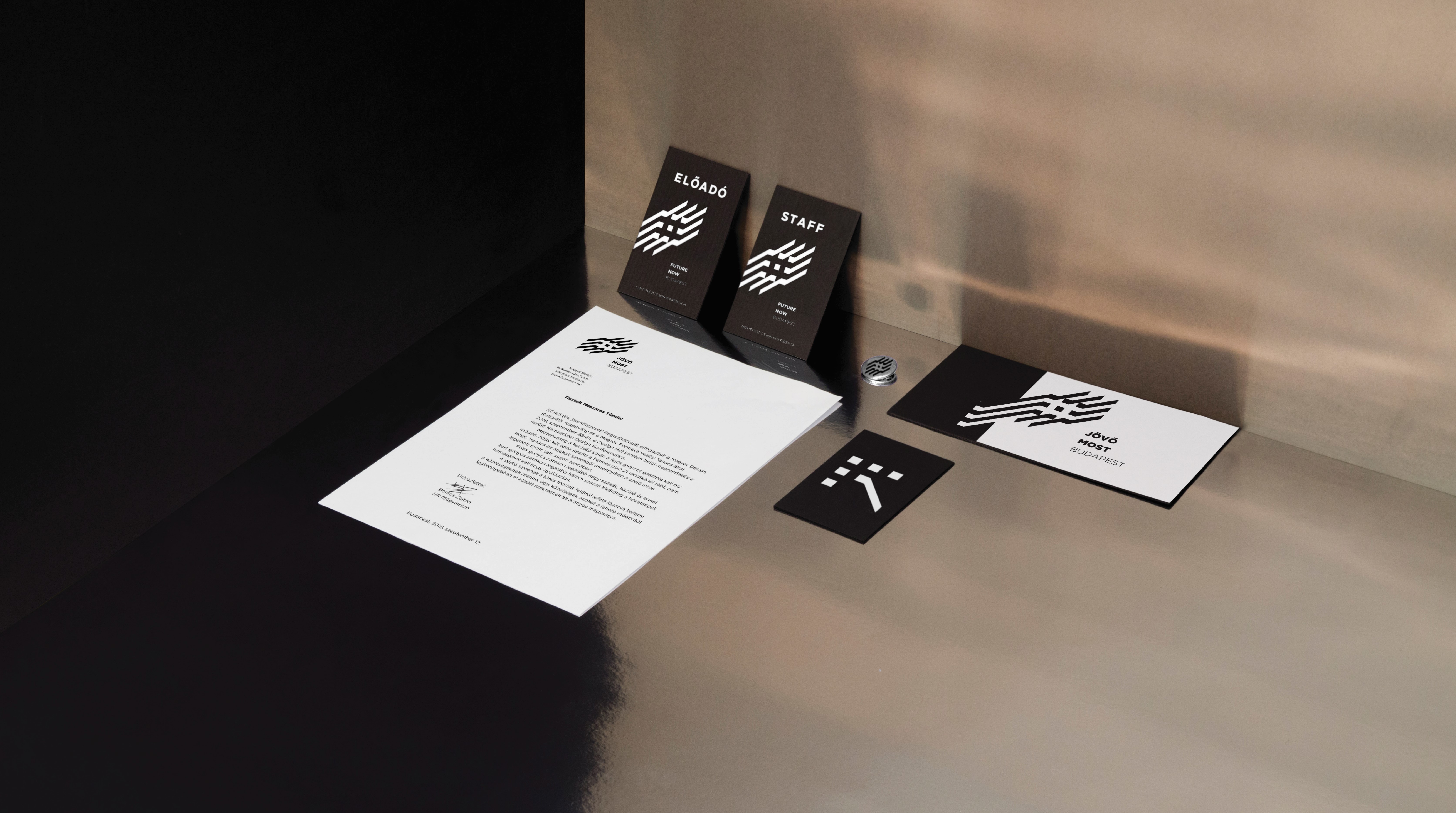
How do creators produce an emblem like this and the brand identity elements associated with it? Is this a quick process or does it take days during which one is constantly thinking about the design while rejecting numerous ideas as they are not really good ones?
KJ: In the case of each job the planning phase is different and a lot depends on the job itself and on the artist, too. Every finalised plan is preceded by a great deal of brainstorming about related ideas, as well as by producing multiple sketches and drafts. The emblem is relatively quickly prepared. The other contents related to the emblem and the brand identity elements are created only after the emblem is completed. Our plan was to present our brand identity elements in real settings and not through stylised and stereotypical mock-ups, which are pre-formulated creative templates used for producing design plans in graphic design.
JP: For this reason, actually a few days before submitting the call, we contacted Pesti Vigadó requesting to see the building and the exact venue of the conference, because we believed this would mean great help and inspiration for the design of the brand image. We were lucky and we could enter the building and the venue in the company of one of our groupmates, who worked alone in the scope of the same call for applications, and this visit largely contributed to our design of the finalised image.
KJ: Our visit was decisive mostly as far as the colour scheme of the image was concerned: before the visit we were trying to carefully consider which colour would actually suit the surroundings where the image would be used. After our tour in Pesti Vigadó we opted for the black and white colour combination because Pesti Vigadó exhibits a distinct style and has its distinct and predominant colours, which we did not want to disrupt or challenge in any way.
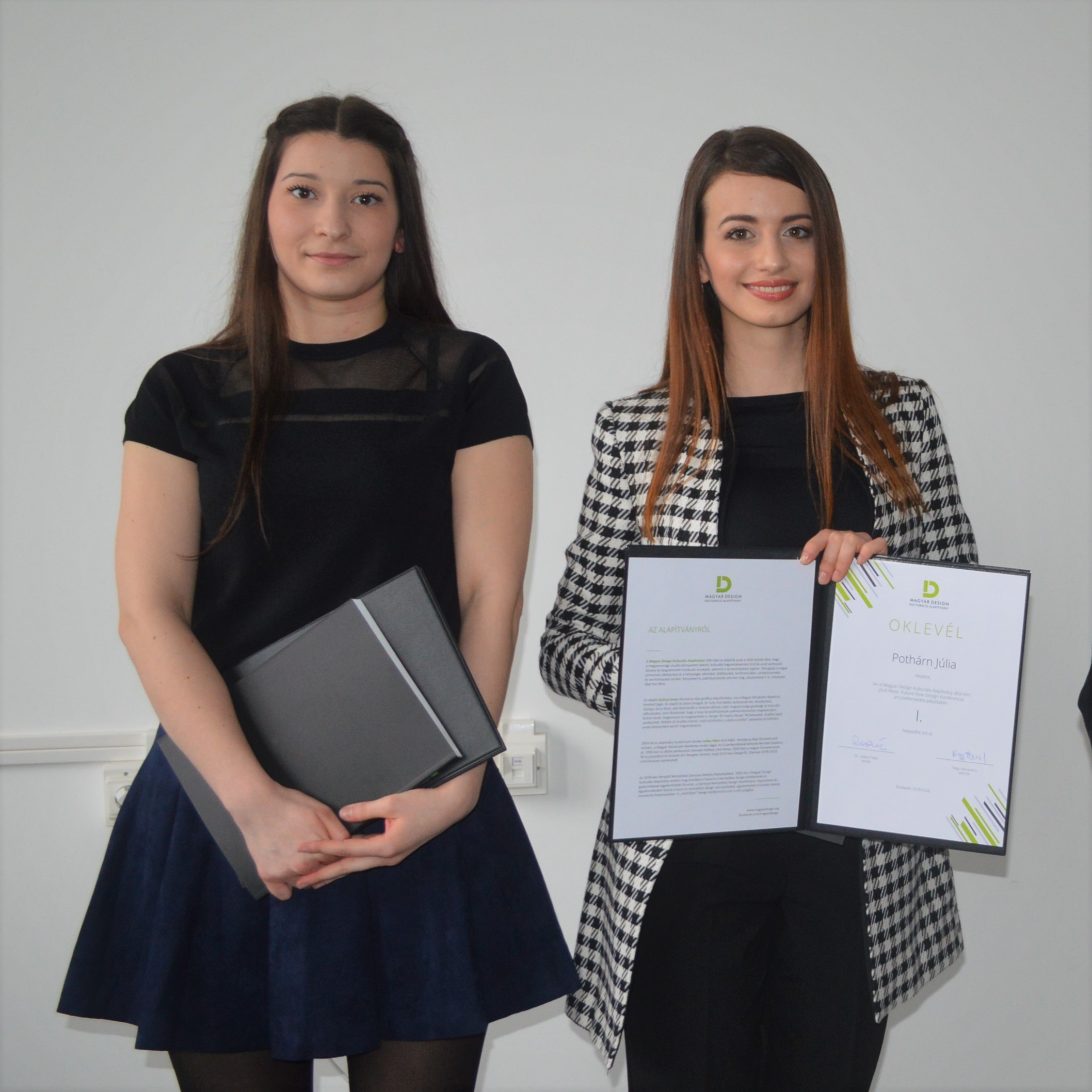
As part of the award, your design will resurface and will be featured as the brand image of the September conference. Given this, how do you relate to the conference event?
KJ: For a first-year university student, this is a marvellous professional experience, and it was a truly great opportunity for us. We could design something real, something that is actually used: this design job was not only an assignment at the university. We are very happy to see our design come true. On top of all this, I feel we have done a great job in our team of two despite the fact that it was our first joint project.
JP: Everything worked out just perfectly between us. Otherwise we would not have been able to submit our design in the scope of this call for applications within such a short time and before the deadline. I am sure we will have further opportunities to work together. This call for applications, which may well prove an excellent reference project for us later on, was really a wonderful opportunity to launch and establish us in our field of expertise.

